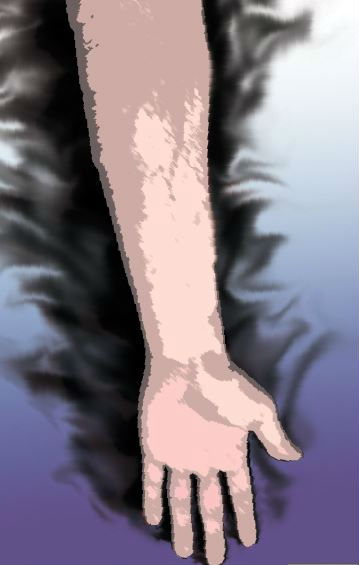When Wendy* ’15 wants to use a razor, she has to ask her mom for one. She then has 15 minutes to use it before she has to return it. She cannot use a knife without the supervision of an adult family member, and she has to give a specific reason for why she needs scissors before she can use them.
Wendy engages in a form of self-harm that is commonly referred to as cutting. She was 12 when she first heard about cutting from her friend’s older sibling. Wendy recalls that the sibling described cutting as something only “hardcore” kids did to release stress from their problems. The next year, when things in her life became difficult to cope with, Wendy first experimented with cutting.
“I started cutting because I had the conception that it was the way the ‘strong’ kids dealt with their emotions,” Wendy said. “I was young and I didn’t know I had a lot of other stress relief options open to me.”
Lori Sunkin, [Michael ’19 and Sophia ’14] who has practiced family therapy in Beverly Hills for 20 years, says that cutting is a manifestation of a person’s internal conflicts.
“Typically, people cut when they are blocking feelings, and they want to feel something,” Sunkin said. “Cutting is usually symptomatic of pain that a person is experiencing deep inside, either situational emotional. It’s representative of some kind of depression or anxiety or life experience that they’ve had, something they don’t know how to express, so they cut themselves in order to express it.”
However, few students are aware of the cutting habits of their peers.
“I don’t think it’s something that’s common at our school,” Elliot Kang ’16 said. “I personally do not know anyone who uses self-harm as a way of coping, and I have not observed any signs on others that suggest that.”
Ren* ’15 is currently seeing a therapist in order to stop cutting himself. He spent a few weeks in the hospital after one attempt at cutting sent him to the emergency room. Ren says it was not a suicide attempt and that he simply cut himself deeper than he had expected and passed out in his bathroom where his mother found him very shortly afterward.
“I haven’t told any of my friends [that I cut],” Ren said. “I’m scared they’re going to judge me for it.”
Students are sometimes disinclined to talk to anyone because of the social stigma that surrounds cutting.
“I can’t tell anyone about [my cutting] because so many people call those who cut things like ‘attention whore’,” Wendy said. “I don’t think that they realize that it’s like an addiction. If people who are addicted to meth or pot are cool, why are people who cut suddenly attention-hungry? I personally think it’s the other way around.”
Sunkin, however, believes students need to refrain from passing judgement.
“When people make comments on why someone does the things that they do, they’re making dangerous assumptions,” Sunkin said. “If you don’t know a person, you shouldn’t make a comment about what they’re trying to do. If someone’s doing something to get attention, it’s because they need that attention.”
Although she does not choose to be open about her past with cutting, Wendy does not try to hide the scars that formed as a result.
“I’ve come to accept that they’re a part of me,” Wendy said. “They remind me to never to get back to the habit again.”
Susan* ’16 was able to stop cutting with professional help and the support of her family, particularly her aunt, who is a therapist. She says she has not touched a blade in two years. She only very occasionally feels the urge to cut, but when she does, she talks to her aunt.
“I regret the scars on my arm, but I also regret the worry and hurt that I brought upon my family,” Susan said. “Every time I go near something sharp, I can see the fear in my mom’s eyes, and it makes me tear up.”
Susan says that her relationship with her mother has suffered greatly as a result of her cutting history.
“Even though it’s been a few years, I feel like the trust that my mom had in me, is still very much damaged,” she said. “Because I lied about what I was doing so that I could maintain my habit of cutting, my mom can’t trust me to be alone or even out with friends. If I could go back to a point in my life before I started cutting, knowing what I know now, I would never have started.”





































